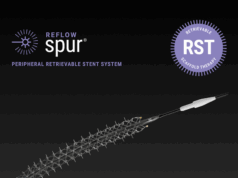Humacyte today announced results from the first series of compassionate use cases of the company’s investigational Human Acellular Vessel (HAV) for the treatment of chronic limb-threatening ischaemia (CLTI) and vascular trauma.
The HAVs were observed to remain patent and infection free in patients requiring vascular reconstruction, thereby highlighting the potential of the HAV to expand limb salvage options for patients who have exhausted current revascularisation conduit options, a company press release communicates. These results were presented at the 46th Annual Winter Meeting of the Vascular and Endovascular Surgery Society (VESS; 27–30 January, Snowmass, USA).
Humacyte details that their HAVs are engineered replacement vessels being designed to be durable, infection-resistant and off-the-shelf to address long-standing limitations in vessel tissue repair and replacement. The company reports that, under the US Food and Drug Administration’s (FDA) expanded access programme (EAP), the HAV has been implanted in more than 20 patients to address multiple severe vascular repair, reconstruction and replacement conditions when there is not a suitable conduit available for treatment.
The results of eight of these EAP patients were reported at the VESS meeting by Alexander Kersey (Uniformed Services University of the Health Sciences and Walter Reed National Military Medical Center, Bethesda, USA), in a presentation, titled, “Real-world experience with the Human Acellular Vessel: A bioengineered implant for arterial repair that expands limb salvage options.”
Each of the patients had severe peripheral arterial disease (PAD) or vascular injury requiring vascular reconstruction but lacked other treatment options and were at risk for limb loss. In this high-risk group of patients, five of the bypasses performed with the HAV currently remain patent (with follow-up times ranging from four to 20 months after surgery), and no incidences of infection of the HAV were noted. Researchers treating these patients concluded that the HAV may greatly expand opportunities for limb salvage in trauma and urgent vascular reconstruction when patients lack suitable alternative conduits.
“Many patients who require urgent vascular reconstruction due to vascular injury or severe PAD are not candidates for synthetic vascular grafts or autologous vein grafts, and those who have exhausted other treatment methods are at high risk of amputation,” said Kersey. “There is considerable need for a new treatment option to avoid resorting to amputation, and results from these compassionate use cases merit additional research into the role the HAV may play in the future of limb-sparing surgery.”
In addition to infection resistance and durable patency, the presentation highlighted the potential clinical utility of the HAV that can be implanted using normal surgical procedures as a readily available, biological alternative for patients at high risk for amputation.
The HAV is currently being evaluated in late-stage clinical trials in vascular trauma repair, arteriovenous access for haemodialysis, and PAD. Humacyte advises that the HAV is an investigational product candidate and is not currently approved for sale by the FDA or any international regulatory authority.













